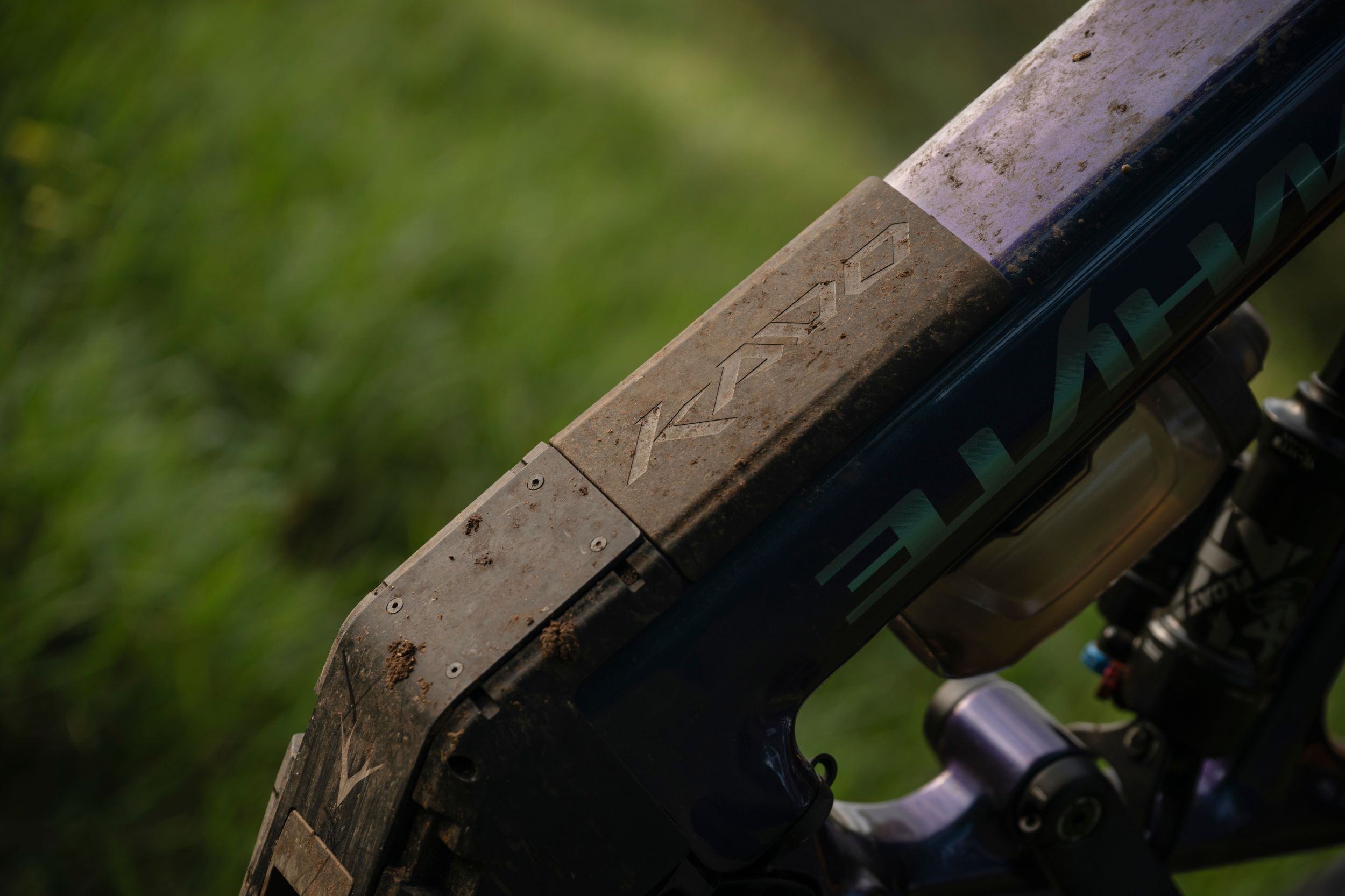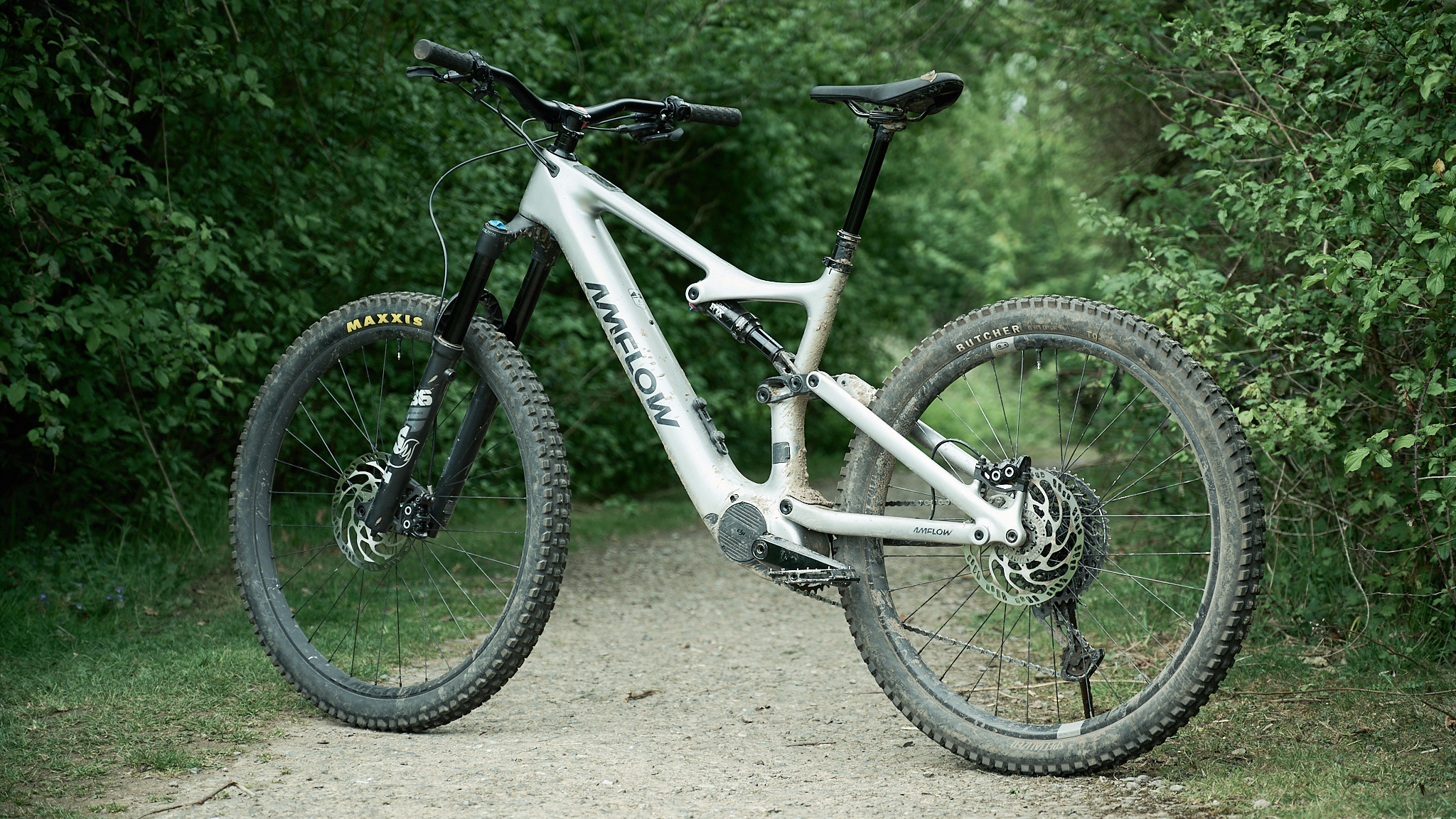Bosch has just boosted the power and torque of its Performance CX motor. So what kind of range can you expect to get out of the 800Wh battery?
I’ve already range-tested the hot new DJI Avinox drive unit on the Amflow PL Carbon, as well as the latest gen 4 Specialized Turbo Levo Pro – both on the same trails, with the same tyres, pressures, and rider on board – so now it’s time to see how much riding I can get out of the benchmark Bosch Performance CX motor now that the power has been turned up to 750W and the torque to 100Nm. Buckle up for another range test video!

This time I got to ride the new Whyte Kado RSX, albeit the blue option.
For this range test I chose the brand new Whyte Kado RSX. This bike represents a big change for the UK brand, being its first full carbon full-fat e-bike, with a number of other new features aiming to build on the success of the old E160. One of the main ones being a new and improved removable battery design, where the 800Wh battery has been optimised to lower the centre of gravity (COG). In fact, Whyte has built a special jig to measure the COG of its development bikes, as well as the main competitors, and says the new Kado has the best COG of any e-bike it has tested and is also 12mm lower than the old E-160.

At the heart of the Kado is the Bosch CX motor, clocked to give room for the battery to slide alongside.
The test bike – Whyte Kado RSX
I got hold of the top-of-the-range RSX model for this range test. Whyte has priced it at £7,499, which is less that the Specialized Turbo Levo Pro I rode (£10,250), but more than the Amflow PL Carbon Pro I just finished testing (£5,999). For that price you get a full carbon frame, 150mm of travel with a 160mm fork, using the Fox 38 Performance Elite up front, and Float X out back. There are Magura MT7 brakes to slow things down, and Maxxis tyres, with an Assegai / Minion DHR II combo with well-chosen Exo+ casing and Maxx Grip at the front and Double Down, Max Terra rear.

A hinged cover gives access to the battery and protects the motor.
Powering all the Kado models is the Bosch Performance CX motor and there’s an 800Wh battery stuffed into the down tube. It’s easily removable thanks to the motor being rotated, and the hinged battery door that swings out of the way to allow access. This is a major advantage over the Amflow’s non-removable DJI 800Wh battery if you don’t have power where you store your bike, or you want to keep the battery warm during the winter. On the other hand, the standard Bosch charger is painfully slow, taking around 8 hours to fully charge. Bosch does make a fast(er) charger, but it costs extra and is nowhere near as rapid as the DJI (0-75% in 1.5 hours) or the Specialized S-Works fast charger (0-80% in under 60 minutes).

The previous Whyte E-160 was a porky old thing at 26.2kg.
The previous E-160 was a heavy bike, so I was keen to see if the new carbon Kado has shed any weight. Whyte says the new bike saves around 2kg, and on the scales, my size large test bike weighed 24.04kg with my Continental Kryptotal control tyres fitted. For comparison, the Specialized Turbo Levo Pro was 24.05kg with the stock DH-casing tyres, and the Amflow PL Carbon was 21.3kg with the Continentals and a 27.5in rear wheel. The old E-160 RSX weighed 26.2kg in the same size with a smaller battery.

Santa Cruz has opted for the smaller 600Wh battery in the Bullit and Vala.
Power versus battery size
The Bosch CX system has two principle battery options, 600Wh and 800Wh. Some brands, like Santa Cruz with the Vala and the Bullit, have chosen to use the slimmer, lighter 600Wh battery in their bikes and let riders supplement that with the Bosch PowerMore 250Wh range extender. Others, like Mondraker with the Crafty, and Whyte, have opted to fit the bigger 800Wh batteries to maximise range. There’s no right or wrong answer to this decision, but given that from July, Bosch owners will be able to upgrade to 750W and 100Nm of torque, it seems sensible to have the bigger power pack on board.

Specialized’s S-Works Turbo Levo has a bigger battery and less power than the Bosch update.
Specialized also offers two battery sizes, 600Wh and 840Wh, but all the bikes come with the bigger unit and that’s what I used for the range test. While the motor is also the same in all models, only the top-end S-Works Turbo Levo gets the maximum 720W and 111Nm of torque. The Pro model I used is limited to 666W and 105Nm. So a less powerful than the Bosch, but a bit more torquey at low speeds and low revs on the steeper climbs.

The Amflow seems to have the magic blend of power, weight, range, and price.
Finally, the DJI Avinox system used in the Amflow PL Carbon runs either a 600Wh or 800Wh battery, with Turbo mode delivering 850W and 105Nm (I didn’t have the latest DJI firmware update that delivers 1,000W). There is a Boost mode increasing these numbers to 1,000W and 120Nm, but I didn’t use it in the range test.
So, Specialized has the biggest battery, and the least powerful motor, which means it should have the best range, right? The Amflow is the most powerful, so it should have the least range. And the Bosch should be somewhere in the middle. That’s if the maths works out. The problem with range testing is that there are lots of other factors, and ambient temperature and ground conditions can make a big difference to the results. Fortunately the weather and trail conditions were really similar for the Specialized and the Bosch tests, but the Amflow was tested on a much cooler day and the trails weren’t totally dry.

The big three: Bosch, DJI, and Specialized
Range test results
Firstly let’s look at the other two bikes. The Amflow with the DJI Avinox motor in Turbo racked up 1,430m of climbing – but remember, on a drier, warmer day, it will do more than this. Aboard the Specialized I smashed that figure, clocking up 1,633m of climbing in Turbo mode. Which leaves the Whyte Kado with the Bosch CX motor and new firmware update, which did – drumroll – 1,601m of climbing in Turbo mode. Pretty good, right? Considering it has a smaller battery and more power than the Specialized Turbo Levo.
One really important point to make is that both the Specialized and the Bosch both gave full power, or near full power, all the way up to the battery going flat. Whereas the Amflow dumped me into limp mode for quite a while before completely switching off. And it was really hard work when I was the most tired! So the Spesh and the Bosch both win in terms of keeping the lights burning brightly all the way to the end of the ride.
What’s next? Well, I think I need to test the DJI Avinox again in drier, warmer conditions, using the new 1,000w Turbo mode. Maybe on a new DJI-powered bike. Watch this space!
Range test table
- 1,633m – Specialized Turbo Levo 4 Pro – Specialized 3.1 motor – 840Wh battery
- 1,601m – Whyte Kado RSX – Bosch Performance Line CX Gen 5 motor, 800Wh battery
- 1,430m – Amflow Pl Carbon – DJI Avinox M1 motor, 800Wh battery
- 1,215m – Cannondale Moterra SL 1 – Shimano EP801 motor, 601Wh battery
- 1,202m – Santa Cruz Heckler SL S – Fazua Ride 60 motor, 430Wh battery
- 955m – Orbea Rise LT M10 – Shimano EP801 motor, 420Wh battery
- 861m – Whyte ELyte 150 RSX – Bosch Performance Line SX motor, 400Wh battery
- 844m – Specialized Turbo Levo SL Expert C – Levo SL 1.2 motor, 320Wh battery
- 811m – Trek Fuel EXe 9.7 – TQ HPR50 motor, 360Wh battery



